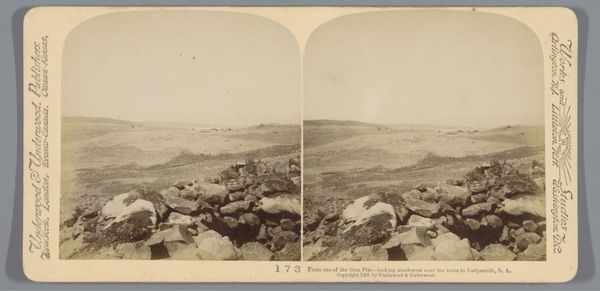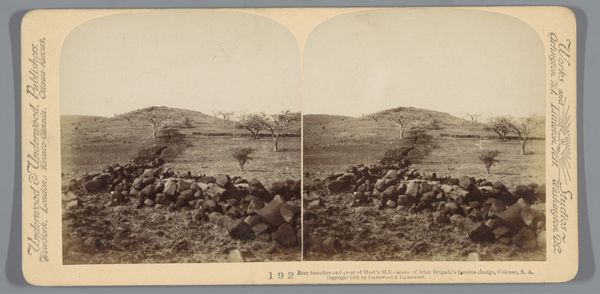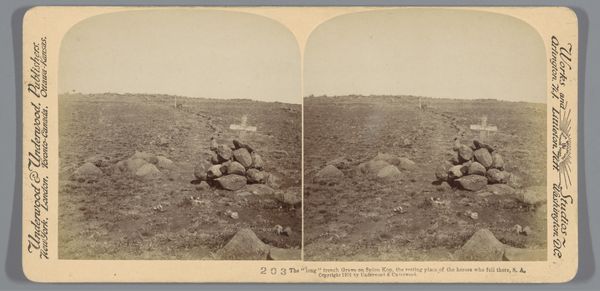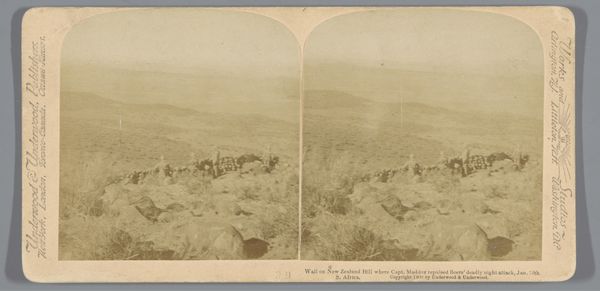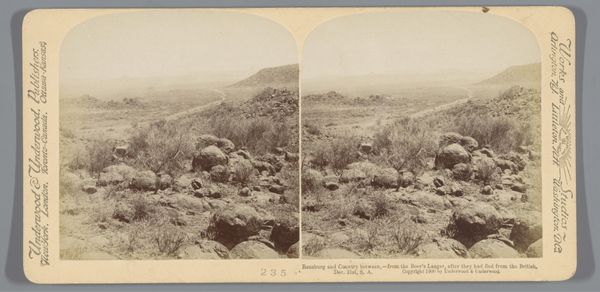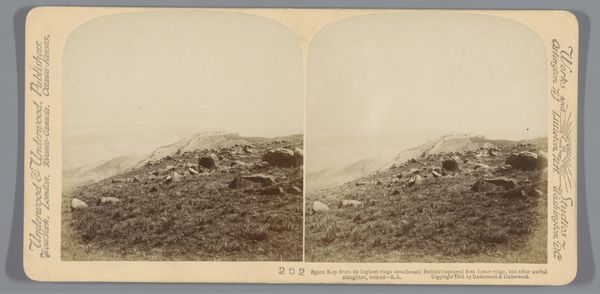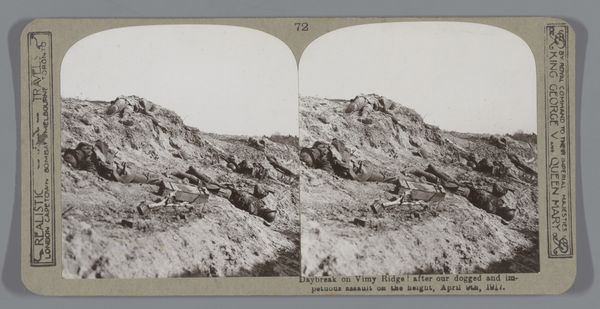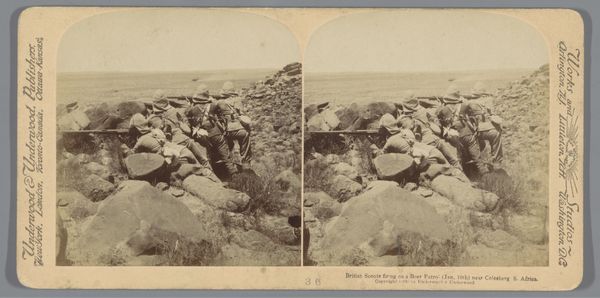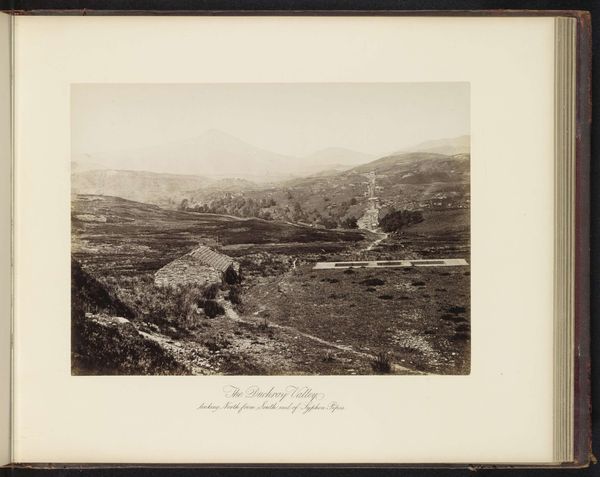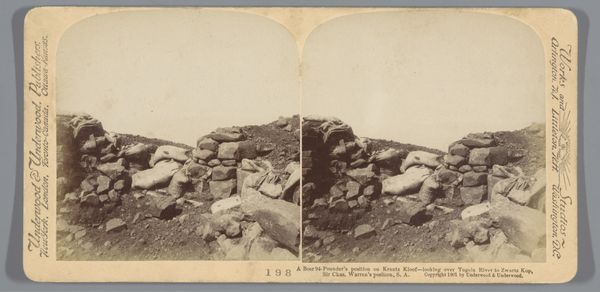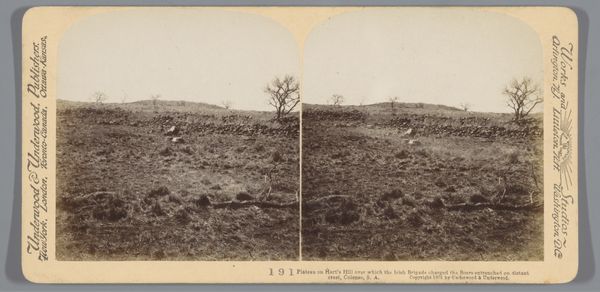
print, photography, photomontage
#
pictorialism
# print
#
landscape
#
photography
#
photomontage
#
realism
Dimensions: height 88 mm, width 178 mm
Copyright: Rijks Museum: Open Domain
Editor: This stereoscopic print, "Gezicht op de zuidelijke helling van Spionkop in Natal," from 1901 by Underwood & Underwood, presents a barren landscape. There’s a starkness to it; a sense of place stripped bare. How would you begin to interpret this piece? Curator: I see here the powerful convergence of industrial technology, photographic practice, and the documentation—or perhaps the manufacturing—of history. The mass production of these stereoscopic images speaks to a booming market for consuming images of distant lands and, significantly, of conflict. What do you think of the materiality of the image itself? The paper, the ink, the method of reproduction… all complicit in a larger narrative? Editor: Absolutely. The mass-produced nature suggests a widespread dissemination of a particular viewpoint on the war, and on the land itself. It raises questions about the company Underwood & Underwood; the process and labor in creating these prints, especially as a means of creating propaganda. Curator: Precisely. We need to consider the resources consumed, the labor involved in both the capture and the reproduction, and how that might affect our understanding of this landscape. Consider the environmental impact of their chemical development and the power dynamics inherent in documenting conflict this way, using that level of resources to commodify and sell violence. Does it not shape our engagement with it? Editor: That makes me rethink my initial impression of the image's 'starkness.' It's not just a desolate landscape; it's a manufactured desolation, packaged for consumption. Curator: Indeed, and by recognizing that production process, we acknowledge not only the artistry, but the societal and economic forces at play in the creation and reception of such an image. That labor becomes the lens. Editor: I've learned that an image of even the most naturalistic landscape can reveal so much about industry and economics and how those influence even our aesthetic perceptions. Curator: And vice-versa. Never forget the value of process when looking at these photographs!
Comments
No comments
Be the first to comment and join the conversation on the ultimate creative platform.
